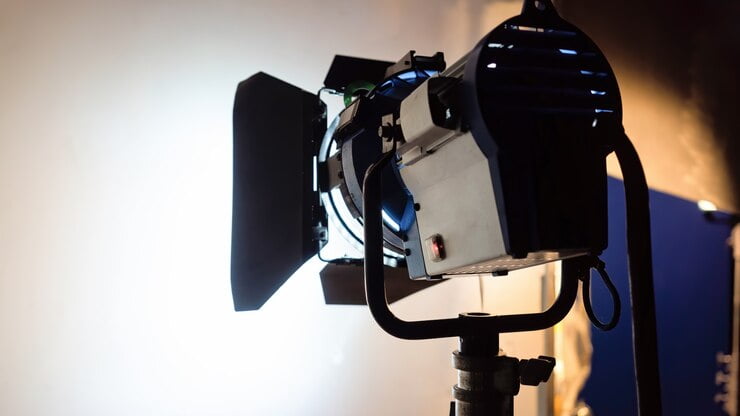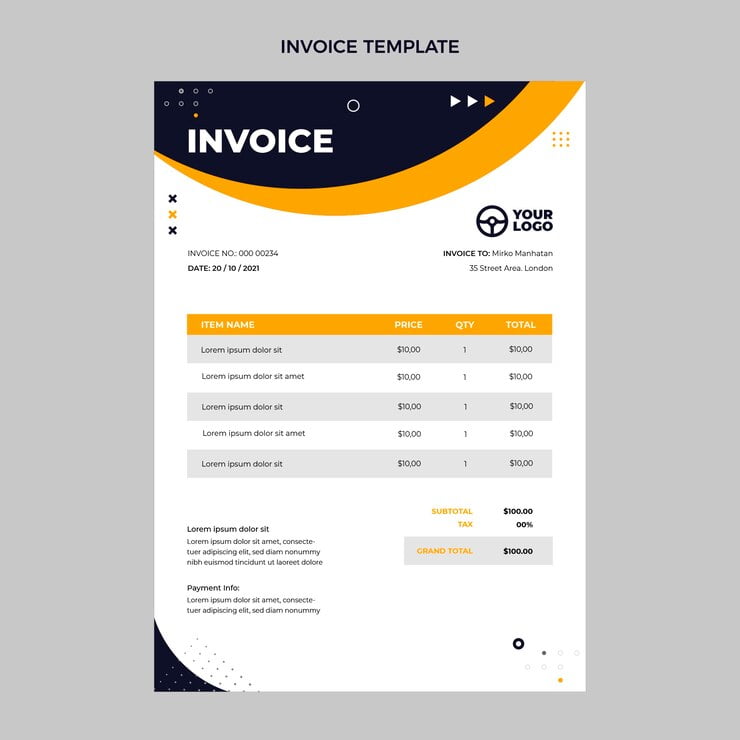Determining the right price for your wedding videography services can be tricky, as it depends on several factors. Here’s some information to help you navigate:
Average Costs:
Videography Service Pricing Guide (United States).
This table provides a starting point for your videography service fees in the United States. Consider this a baseline, and adjust your pricing based on your experience, location, and additional factors discussed below.
| Level | Project Type | Length (Estimated) | Equipment (Typical) | Editing Time (Estimated) | Base Price |
|---|---|---|---|---|---|
| 1: Basic Coverage | Short events, interviews, testimonials | 1-2 hours | DSLR camera, simple lighting | 2-4 hours | $500-$1000 |
| 2: Standard Production | Corporate videos, promotional content, weddings (ceremony) | 4-8 hours | DSLR or mirrorless camera, basic lighting setup, tripod | 4-8 hours | $1000-$2000 |
| 3: Enhanced Storytelling | Documentaries, music videos, creative narratives | 8-12 hours | Advanced camera & lens setup, professional lighting, audio equipment | 8-12 hours | $2000-$3000 |
| 4: Cinematic Productions | High-end commercials, events with multiple locations, weddings (full day) | 12+ hours | Cinema camera, multi-camera setup, professional audio, drones (optional) | 12+ hours | $3000-$5000+ |
| 5: Premium Experience | Complex projects with extensive editing, animation, VFX | Varies | High-end cinema equipment, specialized software, additional crew (optional) | Varies | Negotiable (potentially $5000+) |
Additional Factors Affecting Price:
- Travel: Include mileage, accommodation, and meals as separate charges.
- Editing Complexity: Complex edits with animations, motion graphics, or color grading require additional time and cost.
- Crew Members: If you work with an assistant or director, factor their fees into the project cost.
- Equipment Rentals: For specialized equipment not in your standard kit, rental fees apply.
- Rush Deliveries: Expedited editing often comes with a premium fee.
Important Note: These are just estimations. To create accurate pricing for your specific services, calculate your hourly rate based on your desired income and overhead costs. Then, factor in the estimated time for each project stage (shooting, editing, etc.) and adjust accordingly.
Pro Tips:
- Offer package deals for different levels of service and duration.
- Clearly outline your terms and conditions in a contract to avoid misunderstandings.
- Showcase your portfolio and testimonials to build trust and justify your pricing.
- Network with other videographers to stay updated on industry rates and practices.
Other Nationalities like:
- Nationally: The average cost of a wedding videographer in the US is around $1,799, with most couples spending between $1,000 to $2,500.
- Uganda: Finding specific national averages for Uganda might be difficult, but you can look for local listings and packages to get a general idea. Expect prices to be lower than in the US, possibly starting around $500-$1,000.
Factors Affecting Price:
- Location: Costs tend to be higher in bigger cities and popular wedding destinations. Consider the cost of living and competition in your area.
- Experience: More experienced videographers can charge more due to their skills, established portfolio, and higher demand.
- Coverage Hours: The number of hours you offer coverage for will directly impact your price. Consider the standard wedding timeline and offer different packages with varied hours.
- Additional Services: Editing style (cinematic vs. documentary), number of videographers, drone footage, additional equipment, and travel expenses can all add to your costs.
- Your Value Proposition: Highlight your unique skills, style, and what makes you stand out from competitors. Justify your pricing by showcasing the quality of your work and the experience you offer couples.

Tips for Setting Your Price:
- Research: Look at competitors’ offerings and pricing in your area.
- Cost your time: Calculate your hourly rate by factoring in overhead costs, equipment, and post-production time.
- Package options: Offer different packages with varying features and price points to cater to diverse budgets.
- Be confident: Don’t undervalue your work. Know your worth and confidently communicate your pricing to potential clients.
Unveiling the Value Vault: Understanding Your Videography Worth
Alright, fellow storytellers, let’s talk money. Not the gritty kind stuck under your editing shoes (we’ll cover equipment costs later), but the kind that fuels your creative fire and keeps your business booming. I’m talking about setting fees for your videography services – a delicate dance between valuing your craft and staying competitive in the ever-evolving film jungle.
In my 20 years of navigating the industry, from scrappy indie shoots to high-budget commercials, I’ve learned one crucial truth: understanding your value proposition is the bedrock of confident pricing. Think of it as your personal treasure map, guiding you to fees that reflect your expertise and attract dream clients.
Experience & Expertise: This isn’t about bragging, but wielding your experience like a seasoned director wields a camera. Quantify those years spent honing your skills, those late nights mastering editing software, and those awards gathering dust on the shelf (dust them off for your portfolio!). Mention those certifications that prove your technical prowess, and don’t shy away from dropping names of high-profile clients who’ve entrusted you with their stories.
Gear & Resources: Your camera arsenal speaks volumes, so let it do the talking! Highlight the professional equipment you wield – those top-of-the-line lenses, that trusty drone that captures breathtaking aerials, that lighting setup that makes shadows sing. Own unique tech that gives you an edge? Flaunt it! Remember, clients want the confidence of knowing you’ll paint their vision with the best tools in the toolbox.

Creative Style & Approach: You’re not just a camera operator, you’re a visual storyteller. Define your artistic fingerprint – are you a master of emotive documentaries, a wizard of cinematic narratives, or a comedic maestro who tickles funny bones with your lens? Showcase examples that embody your unique style and prove you can connect with the client’s target audience on a deeper level.
Remember: This isn’t just about you, it’s about the value you bring to the project. Show clients how your experience, expertise, and unique vision will elevate their story, leaving them with a captivating piece that exceeds expectations.
II. Cost Breakdown: Mapping the Financial Frontier.
Now, let’s get down to the nitty-gritty – the cold, hard cash that keeps our cameras humming. Pricing a videography project isn’t about throwing a dart at a fee board, it’s about meticulous cost analysis. Think of it as building a budget fortress, protecting your profitability while delivering projects that wow.
Pre-Production: This is where the groundwork gets laid. Consultations, storyboarding, location scouting – they all add up. Factor in any permits, equipment rentals, and travel expenses incurred before the first “action” is called. (Pssst, travel costs deserve their own section later, trust me.)
Production: The heart of the action! Shooting time, crew members (if you’re rocking a team), travel during filming, accommodation, and even catering for those long, creative days – every element needs to be accounted for. Remember, a happy crew is a productive crew, so keep their bellies full (and maybe throw in a caffeine budget for those editing marathons).
Post-Production: The magic happens here! Editing software licenses, music licensing (those royalty fees can bite!), motion graphics for that extra oomph, color grading to make every frame sing, and revisions to fine-tune the masterpiece – all need to be factored into your pricing puzzle.
Project Complexity: Not all stories are created equal. Differentiate your pricing based on the number of shooting locations, the duration of filming, any special effects wizardry that needs to happen, and the complexity of the editing process. A two-hour wedding video requires different resources than a week-long documentary shoot in the Amazon, you know?
Table Time: Let’s break it down visually:
| Project Stage | Potential Costs |
|---|---|
| Pre-Production | Consultations, storyboarding, location scouting, permits, equipment rentals, travel |
| Production | Shooting time, crew, travel, accommodation, catering |
| Post-Production | Editing software, music licensing, motion graphics, color grading, revisions |
This is just a rough map, your specific costs will vary. But remember, meticulous cost analysis is your weapon against underselling and undervaluing your work. Treat it with respect, and it will guide you towards fair and sustainable pricing.
Stay tuned for Part II, where we’ll dive into market research, pricing strategies, and the art of negotiation! And believe me, negotiation is an art form in this business.
Navigating the Pricing Jungle – Strategies, Research, and the Art of the Deal.
Welcome back, cinematic comrades! We’ve cracked the value vault in Part I, and now it’s time to chart our course through the pricing jungle. Fear not, fellow storytellers, for I’ve been through this wilderness enough times to know the hidden paths and thorny traps. Let’s explore market research, pricing strategies, and the delicate dance of negotiation – all crucial weapons in your videography arsenal.

I. Market Research: Know Your Turf.
Think of market research as your trusty compass, guiding you through the competitive landscape. Before setting your flag, understand the lay of the land:
- Competitive Analysis: Dive into the rates of your fellow videographers. Scope out their experience level, target market, and service offerings. This isn’t about copying, but learning where you fit in the pack.
- Industry Standards: Look beyond your local jungle. Check out pricing guides and recommendations from videography associations. Seeing the national landscape can be surprisingly enlightening.
- Client Budget Expectations: Don’t be a blind explorer. Conduct surveys, consult with potential clients, and understand the typical budgets allocated for videography projects in your target market. Knowing their expectations prevents sticker shock and sets you up for successful negotiations.
Table Time (Round Two):
| Research Tip | Why It Matters |
|---|---|
| Competitive Analysis | Gauge your value compared to others. |
| Industry Standards | See the bigger picture of videography pricing. |
| Client Budget Expectations | Avoid misalignments and ensure value fit. |
II. Pricing Strategies: From Packages to Hourly Hijinks.
Now, for the fun part: choosing your pricing weapon! There’s no one-size-fits-all approach, so explore the options and find what fits your style and niche:
- Hourly Rate: Perfect for short projects or unpredictable shoots, charge a fixed rate for your time. Think of it as your “time is money” mantra in action.
- Day Rate: For projects with a defined shooting schedule, a flat rate for a full day of filming offers clarity and convenience. Picture it as your “all-you-can-shoot” package.
- Package Pricing: Cater to different budget levels and project types with pre-defined packages offering varying features and deliverables. Think of it as your “buffet of videography goodness.”
- Project-Based Pricing: For complex projects with unique needs, customize your fee based on the specific scope and complexity. This is your “bespoke storytelling” option.
Pro Tip: Remember, “cheap” and “affordable” are not the same. Value-based pricing focuses on the impact you bring to the project, not just the hours you work. Clients won’t blink at your price if they understand the return on their investment – the captivating story you’ll craft for them.
III. Negotiation: The Art of the Win-Win.
Ah, negotiation. The tango of compromise is where both parties leave the dance floor feeling triumphant. Here are some steps to make it a graceful waltz, not a clumsy stomp:
- Be Prepared: Know your costs, your value proposition, and the client’s budget inside out. Confidence is your best accessory.
- Focus on Value: Don’t just talk price, talk about the impact your skills will have on their project. Show them the “before and after” of your expertise.
- Listen and Collaborate: Understand their needs and concerns. Can you offer alternative solutions or package adjustments? Remember, it’s about finding a mutually beneficial path.
- Be Professional, Be Firm: Stand by your rates while remaining open to reasonable discussion. A professional demeanor wins trust and respect.
Bonus Tip: Don’t undercut yourself! Your time and talent are valuable. Offer discounts for repeat clients or referrals, but never cheapen your craft for a quick buck. Remember, the jungle is full of clients who appreciate quality storytelling, so stay true to your worth.
Part II is complete! Armed with market research, strategic pricing, and the art of negotiation, you’re now ready to confidently navigate the videography pricing jungle. Remember, value your expertise, understand your market, and never be afraid to walk away from a deal that doesn’t resonate. The right clients, the ones who truly appreciate your storytelling magic, are waiting for you on the other side.
Conquering the Extra Expenses – Travel, Tech, and the Art of “No”
Welcome back, intrepid explorers! We’ve traversed the pricing jungle, armed with market knowledge, strategic packages, and negotiation finesse. Now, let’s tackle the hidden crevices of the financial landscape – those pesky additional expenses that can lurk in the shadows of your meticulously crafted budgets. Fear not, for I come bearing wisdom gained from countless budget battles won and lost.
I. Travel Tales: When Miles Munch Money.
Ah, travel. It broadens the mind, but it can also broaden your budget deficit if not handled wisely. Here’s how to keep your wanderlust in check without sacrificing profitability:
- Transparency is Key: Clearly outline your travel policy in your contracts. This includes mileage rates, accommodation costs, meal allowances, and any additional travel expenses like flights or car rentals. No surprises, just clear communication.
- Location Logistics: Consider the shooting location before you quote. Can you offer local rates if filming near your base? Is a remote shoot worth adding a travel package or negotiating a higher day rate? Think geographically, my friends.
- Negotiate with Nuance: When discussing travel costs, consider offering flexibility. Can you stay with family to offset accommodation? Are there ways to combine projects in the same area to minimize travel expenses? Every negotiation opportunity counts.

II. Tech Treasures: Your Tools, Your Costs.
Cameras, drones, lighting setups – your equipment arsenal is your creative playground, but it can also be a financial sinkhole. Here’s how to manage those tech-thirsty monsters:
- Factor in Depreciation: Your gear loses value over time. Account for depreciation in your pricing to ensure you can replace those beloved lenses and lighting rigs when they eventually retire.
- Rent Strategically: Don’t buy every shiny gadget that catches your eye. Rent specialized equipment for specific projects instead of accumulating a costly collection. Remember, renting is like borrowing a friend’s car – temporary fun without a long-term commitment.
- Maintenance Matters: Regular maintenance keeps your equipment humming and prevents costly breakdowns. Factor in maintenance costs into your pricing, or consider offering equipment maintenance packages to clients. A well-oiled machine is a happy (and profitable) machine.
III. The Art of “No”: Protecting Your Time and Sanity.
Sometimes, saying “no” is the wisest negotiation tactic of all. Learn to recognize projects that don’t align with your budget, expertise, or schedule. Remember, your time and talent are precious:
- Know Your Worth: Don’t undersell yourself to fit a budget that doesn’t respect your expertise. Politely decline projects that undervalue your services. Remember, your “no” protects your future “yesses” from clients who truly appreciate your worth.
- Time Transparency: Be upfront about your availability and workload. Don’t overcommit yourself to avoid rushed, subpar work. A happy client is a repeat client, and quality craftsmanship takes time.
- Alternative Solutions: Can you offer a smaller package or recommend another videographer who might be a better fit for the project? Collaboration and ethical referrals can go a long way in building a positive reputation.
Conquering the additional expenses, from travel tales to tech treasures and the art of “no,” is crucial for maintaining financial stability and artistic integrity. Be transparent, negotiate with nuance, and never be afraid to stand your ground. Remember, a sustainable videography career is built on both passion and profit and knowing how to manage the financial intricacies is just as important as crafting captivating stories.
Sealing the Deal with Contracts and Communication – Legal Protection and Client Satisfaction.
Welcome back, fellow filmmakers! We’ve charted the pricing jungle and conquered those pesky extra expenses, and now it’s time to bring it all home with a flourish. I’m talking about contracts, communication, and the art of keeping those client relationships flourishing long after the final cut. Trust me, after two decades in this industry, I’ve learned a thing or two about building trust and protecting your hard work.
I. Contractual Clarity: Your Legal Lifeline.
Contracts aren’t just a formality, they’re your shield against misunderstandings, scope creep, and unpaid invoices. Treat them with the respect they deserve:
- Must-Have Clauses: Cover every aspect of the project, from the scope of work to payment terms, deliverables, and revision policies. Include clear cancellation clauses for unexpected events.
- IP Ownership: Clarify who owns the intellectual property of the footage and final product. This protects your creative rights and ensures proper usage of your work.
- Licensing and Usage: Specify how the client can use the video, including any limitations on distribution or commercial purposes. Be clear about licensing fees for different usage scenarios.
- Dispute Resolution: Outline a process for handling any disagreements or conflicts that may arise. This could include mediation, arbitration, or legal recourse.

II. Communication is Key: Before, During, and After.
Clear communication is the cornerstone of any successful client relationship. Here’s how to keep those lines buzzing with positivity:
- Initial Consultations: Set clear expectations from the start. Understand their vision, budget, and timeline. Discuss your process and payment terms in detail.
- Production Updates: Keep clients informed throughout the project with regular updates, especially if any unexpected delays or changes occur. Transparency builds trust.
- Feedback and Revisions: Be open to feedback, but also establish a clear revision policy to avoid endless back-and-forths. Remember, you’re the expert, so guide the revision process with your professional judgment.
- Project Completion and Delivery: Celebrate the final product with enthusiasm! Deliver the video in the agreed-upon format and provide any necessary instructions for usage.
- **Post-Project ** Maintain relationships with clients by checking in after completion. Ask for feedback, offer additional services, and stay on their radar for future projects.
III. Building Long-Term Relationships: The Secret to Sustained Success.
Videography isn’t just about one-off projects, it’s about cultivating a community of clients who trust your vision and value your expertise. Here are some tips to nurture those connections:
- Overdeliver on Value: Go above and beyond to exceed expectations. This could mean adding a few extra shots, providing faster turnaround times, or offering helpful advice beyond the scope of the project.
- Stay Connected: Keep in touch with clients through email newsletters, social media, or even personalized video updates. Share your latest work and offer special promotions to keep them engaged.
- Seek Referrals: Encourage happy clients to spread the word about your services. Word-of-mouth marketing is incredibly powerful in the creative industry.
- Foster Community: Build relationships with other videographers and creative professionals. Collaborate on projects, exchange knowledge, and refer clients to each other. A supportive network fuels growth and opportunities.
Part IV, is complete! With contracts in hand, communication channels open, and a focus on long-term relationships, you’re now ready to seal the deal and build a thriving videography business that stands the test of time. Remember, legal protection and client satisfaction go hand-in-hand, and by mastering both, you’ll create a foundation for sustainable success.
Bonus Round – Value-Added Services and Building a Thriving Business.
Welcome back to the final act, fellow filmmakers! We’ve covered every scene from pricing to contracts, but before the credits roll, let’s dive into some bonus tips to elevate your videography business to new heights. It’s time to explore those value-added touches that make clients swoon and strategies for building a sustainable, thriving career in this mesmerizing industry.
I. Value-Added Services: The Extra Sparkle That Enchants Clients.
Think of these as the cinematic cherries on top, those extra flourishes that make your services even more irresistible:
- Drone Footage: Capture breathtaking aerial shots that add a whole new dimension to your videos.
- Live Streaming: Offer live video coverage for events, conferences, or social media marketing campaigns.
- Social Media Promotion: Help clients promote their videos through strategic social media campaigns, expanding their reach and engagement.
- Editing Workshops: Share your expertise by teaching editing workshops for businesses or individuals, diversifying your income streams, and building community.
II. Building a Thriving Business: Beyond the Lens.
Running a successful videography business involves more than just shooting and editing. Here are essential strategies to nurture long-term growth:
- Marketing and Branding: Create a strong brand identity that showcases your unique style and expertise. Utilize social media, website content, and networking to reach potential clients.
- Financial Management: Track income and expenses meticulously, set financial goals, and plan for taxes and business expenses. Financial literacy is crucial for any entrepreneur.
- Continuous Learning: Stay up-to-date with the latest videography trends, software, and techniques. Invest in workshops, online courses, or mentorships to refine your craft and stay ahead of the curve.
- Community Engagement: Build relationships with other videographers, creative professionals, and potential clients through networking events, online communities, and collaborations. A supportive network fosters growth and opportunities.
Remember, a thriving videography business is a continuous journey, not a single destination. Embrace the challenges, celebrate the successes, and always seek to evolve your craft and your business practices. By valuing your expertise, prioritizing client satisfaction, and investing in continuous growth, you’ll create a career that not only captures captivating stories but also empowers you to live your own cinematic adventure.

I am a highly experienced film and media person who has a great deal to offer to like-minded individuals. Currently working on several exciting projects, I am a film and media practitioner for over a decade. I have achieved a great deal of success in my professional career.








